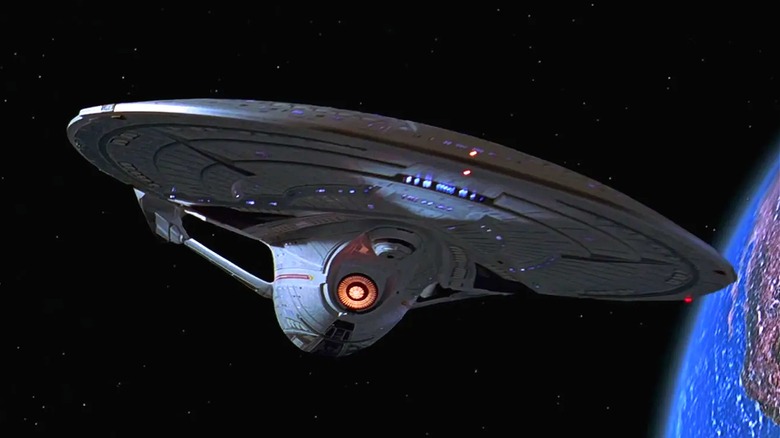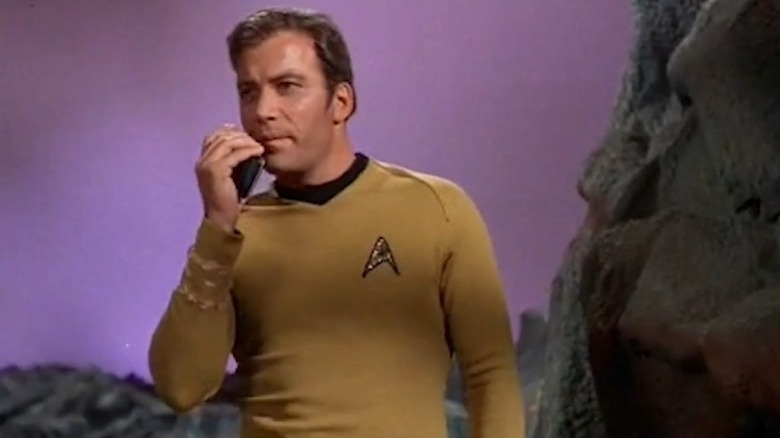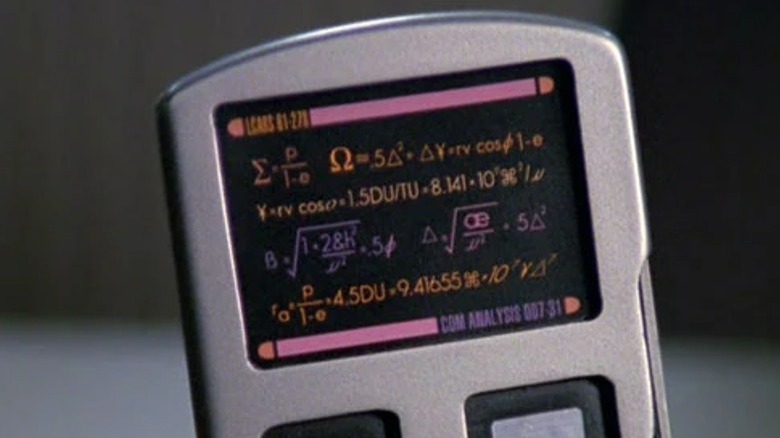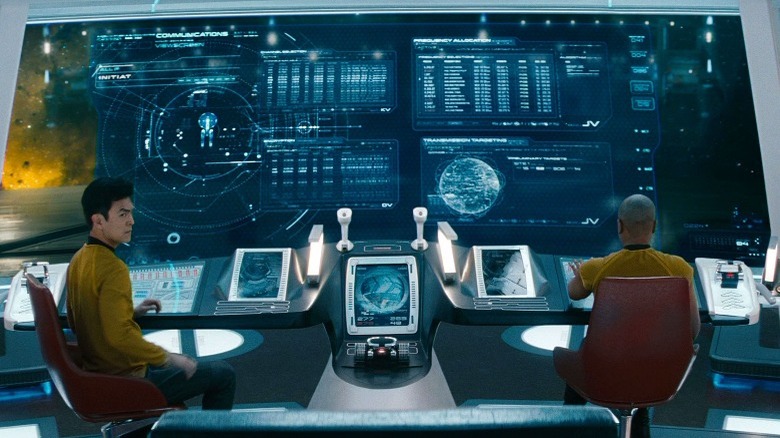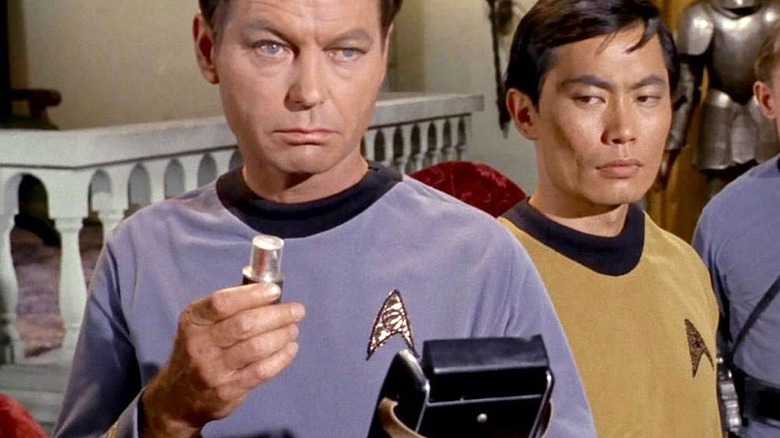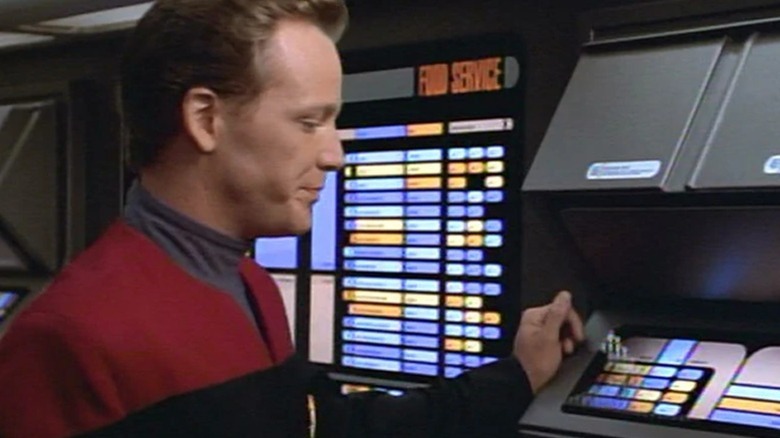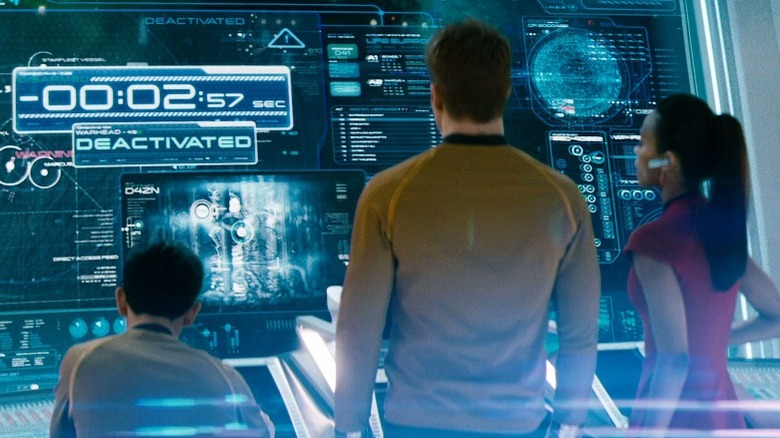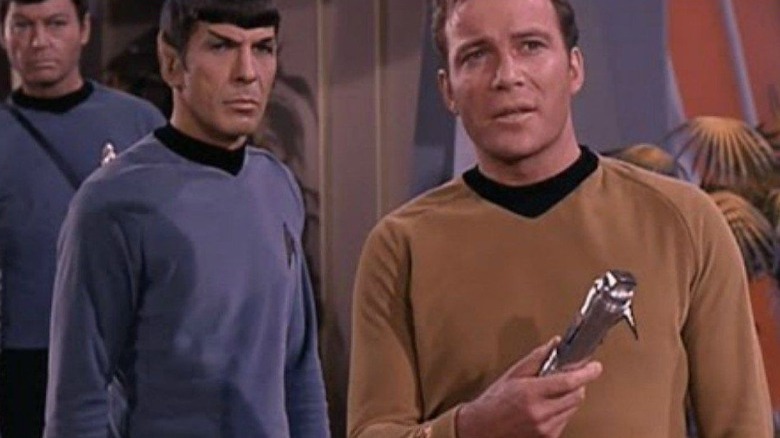All The Technology Star Trek Predicted Accurately
Since its debut in 1966, the "Star Trek" series has captivated audiences worldwide with its vision of the future. Its innovative and forward-thinking concepts have not only entertained but also inspired many people to pursue their interests in science and technology. The show's futuristic devices and technologies have been a source of inspiration for countless scientists and engineers who have subsequently developed real-world applications based on the show's fictional ideas.
For instance, the handheld communicators used by the characters in the show have served as a model for today's smartphones, while 3D printing technology was partly inspired by the show's replicator technology. The medical technologies featured in "Star Trek" have also had a significant impact on real-world healthcare, inspiring researchers to develop similar technologies for use in medical settings.
The influence of "Star Trek" on modern technology has been vast and far-reaching, inspiring generations of innovators to dream big and push the boundaries of what is possible. This has led to numerous technological advancements that have changed our lives for the better. Overall, the series' impact on popular culture and technology continues to be felt to this day — nearly six decades after its debut.
Communicators
The idea of handheld communication devices was first introduced in the original "Star Trek" series in the late 1960s, and it was a revolutionary concept at the time. Before then, long-distance communication required bulky and expensive equipment that was only available to the military or government agencies. However, "Star Trek" imagined a future where everyone could carry a small, portable device that could connect them with anyone, anywhere, at any time.
Today, we can see that vision has become a reality with the ubiquitous presence of smartphones. They are essentially advanced versions of the communicators featured in "Star Trek," with the added bonus of being able to access the internet, take photos, and provide GPS navigation. The versatility of smartphones has made them an essential tool in our daily lives, as we rely on them to stay in touch with family and friends, conduct business, and even entertain ourselves.
Perhaps the most significant impact of smartphones has been their ability to democratize communication. No longer is it just the wealthy or powerful who can afford to stay connected. Smartphones are now affordable and accessible to people of all socioeconomic backgrounds, making it possible for anyone to stay in touch with loved ones, access important information, or even start a business.
Overall, the concept of handheld communication devices first introduced in "Star Trek" has had a profound impact on our society, and the continued evolution of technology promises to keep pushing the boundaries of what is possible.
Tablets
The introduction of PADDs in "Star Trek: The Next Generation" was a forward-thinking concept that predicted the development of modern-day tablets. PADDs were essentially handheld computers that allowed the crew to access information, communicate with each other, and perform a variety of tasks, all from a single device. They were small and lightweight, making them easy to carry around and use in any situation.
Today, we have tablets that are similar in design and function to PADDs. Tablets are thin, lightweight devices with large screens that can display high-quality graphics and video. They are ideal for reading books, browsing the internet, and watching movies or TV shows. They also come with a range of apps and features that allow users to perform a variety of tasks, from taking notes to playing games and even creating digital art.
The most significant benefit of tablets is their portability. They are smaller and lighter than laptops, making them easy to carry around in a bag or even your pocket. This makes them an excellent choice for people who need to access information on the go, whether for work or personal use. They also have a longer battery life than most laptops, meaning you can use them for longer periods without needing to recharge.
Overall, the concept of PADDs in "Star Trek: The Next Generation" was a visionary technology that predicted the development of modern-day tablets. Tablets have become an essential tool for many people, allowing them to access information and stay connected with the world around them, no matter where they are. With ongoing technological advancements, it's exciting to imagine what the future of portable computing might look like.
Voice-activated computers
The LCARS system featured in "Star Trek: The Next Generation" was a cutting-edge technology that allowed users to interact with the ship's computer using natural language commands. This was a revolutionary concept at the time, as most computer systems required users to input commands using a keyboard or mouse. LCARS made it possible to access information and control ship's systems quickly and efficiently, simply by speaking.
Today, we have virtual assistants like Siri and Alexa that operate on similar principles to LCARS. These virtual assistants can understand natural language commands and respond to user requests in a conversational manner. They can be used to access information, control smart home devices, and even make phone calls or send messages, all with simple voice commands.
Virtual assistants shine in their ease of use. These tools eliminate the need to type or click, which can be especially helpful for people with disabilities or those with difficulty using traditional computer interfaces. Additionally, they can be used hands-free, which makes them ideal for multitasking or when your hands are occupied.
Virtual assistants have become an essential tool for many people, both in personal and professional settings. They have made it easier to access information, automate tasks, and communicate with others. As technology continues to evolve, it's exciting to think about the possibilities of what virtual assistants might be able to do in the future. Perhaps they'll even be able to replicate the conversational abilities of the LCARS system from "Star Trek: The Next Generation" one day.
Medical tricorders
The tricorder was one of the most iconic pieces of technology featured in "Star Trek." It was a handheld device that could diagnose and treat injuries and illnesses by scanning a person's body and analyzing their health data. The device could provide detailed information about a person's vital signs, blood tests, and even DNA analysis, making it an essential tool for medical personnel in the "Star Trek" universe.
Today, medical technology has made significant advancements, and we have devices that operate similarly to the tricorder. MRI machines and CT scanners are used to scan and diagnose medical conditions, providing detailed images of the inside of the body. These machines are invaluable tools for diagnosing a range of medical conditions, including cancer, cardiovascular disease, and neurological disorders.
We also have handheld devices that can monitor vital signs like blood pressure, heart rate, and oxygen saturation. These devices are portable and can be used in a variety of settings, from hospitals to homes. They can provide a preliminary diagnosis for certain conditions, making them a helpful tool for medical professionals and patients alike.
The development of medical technology has significantly improved the quality of healthcare and has revolutionized the way medical professionals diagnose and treat illnesses. While we may not yet have a tricorder that can provide a complete medical analysis with a single scan, the advancements in medical technology have made it possible to obtain vital health information quickly and accurately, ultimately leading to better patient outcomes.
3D printing — Replicators
In "Star Trek: Voyager," the replicator was a fascinating technology that allowed the crew to create food, clothing, and other objects on demand. With a simple command, the replicator would use digital designs to create physical objects, making it an essential tool for the crew as they explored the vast expanse of space. The best example of this was seen in "Extreme Risk," where Lt. Paris and Chief Engineer Torres used the replicator system to create parts for the Delta Flyer shuttle craft they were designing.
Today, we have 3D printing technology, which operates similarly to the replicator in "Star Trek" by using digital designs to create physical objects. This allows manufacturers, engineers, and even medical professionals to produce complex shapes and structures that were previously impossible to make with traditional manufacturing methods.
One of the most exciting applications of 3D printing technology is in the field of medicine. Medical professionals can use 3D printers to create replacement parts, such as bones or joints, or even to produce human organs. This has the potential to revolutionize the medical industry and save countless lives.
This technology has a wide range of applications, from creating prototypes and replacement parts to manufacturing consumer products and even food. With the ability to create custom designs quickly and inexpensively, 3D printing technology has the potential to transform various industries and improve the way we live our lives.
While we may not yet be able to create a full meal with a replicator, the 3D printing technology available today is a remarkable achievement that can potentially change the world as we know it.
Holodecks
Virtual reality has come a long way since "Star Trek" first introduced the concept of the holodeck in "Star Trek: The Animated Series." With the advancements in technology, we now have access to head-mounted displays, hand controllers, and even full-body tracking systems that allow us to fully immerse ourselves in virtual environments. These technologies work together to create a truly immersive experience that engages all our senses.
The most popular application of virtual reality technology is in gaming. VR headsets like the Oculus Rift and the HTC Vive allow gamers to step into a virtual world and interact with it in ways that were previously impossible. In addition to gaming, virtual reality is also used in education to create immersive learning experiences. Students can use VR technology to explore historical sites, conduct science experiments, and even learn new languages.
Virtual reality is also being used in the field of training. For example, medical professionals can use VR technology to practice surgical procedures in a simulated environment without the risk of harming real patients. Similarly, the military can use virtual reality to train soldiers for combat situations and emergency responders can use it to simulate disaster scenarios.
Overall, virtual reality technology has revolutionized the way we experience digital content and has opened up new possibilities in gaming, education, and training. While we may not have fully functional holodecks like the ones featured in "Star Trek" just yet, virtual reality technology is certainly getting us closer to that reality.
Heads-up displays (HUDs)
Heads-up displays (HUDs) are seen throughout "Star Trek," and these devices have undergone significant advancements in the real world over the last few decades as they have become an increasingly popular component in aviation and automotive applications. HUDs allow drivers and pilots to maintain eye contact with the road or sky while the display projects important information directly into their field of view.
In aviation, HUDs have become an essential part of contemporary cockpit technology, enabling pilots to maintain situational awareness while controlling the aircraft by prominently displaying crucial data such as airspeed, altitude, and heading. By providing visual cues and warning indicators during critical flight stages, such as takeoff and landing, HUDs help pilots make split-second decisions.
HUDs have also become more common in the automotive sector, offering drivers a safer and more practical way to receive information. By projecting speed, navigational instructions, and other essential information directly onto the windshield, HUDs enable drivers to keep their eyes on the road and avoid distractions.
The use of HUDs has revolutionized how we interact with technology, making it easier and safer to access critical data. As technology continues to advance, we can expect to see HUDs incorporated into an increasing number of products and applications. For example, wearable HUDs are becoming more popular, providing users with hands-free access to important information in industries such as healthcare and logistics. As new features and applications are developed, it is clear that the future of HUD technology is bright.
Universal translator
The concept of a universal translator as depicted in "Star Trek" has been a source of inspiration for the development of real-world translation technologies like Google Translate. The universal translator was a revolutionary device that allowed the characters in "Star Trek" to communicate with alien species they encountered during their interstellar travels by translating any language instantly.
What once seemed like an unattainable idea is now a reality. Today there are several translation apps and devices that have made it possible to communicate with people from around the globe without the need for a human translator. Google Translate is one of the most popular translation tools available today, and its creation owes a lot to the universal translator from "Star Trek." This app utilizes machine learning to analyze text and provides real-time translations in over 100 languages. It can translate whole websites, documents, and even speech. Google Translate is accessible on desktops and mobile devices, making it easy to use from anywhere.
Skype Translator is another great example of real-world translation technology that allows people to have voice conversations in real-time in different languages, and iTranslate offers translations in over 100 languages and can even translate text from images. Translation technology has made significant progress, and we can now communicate with people from different parts of the world more efficiently than ever before. As technology advances, we can expect to see even more sophisticated translation tools emerge, bringing us closer to a world without language barriers.
Biometric identification
From its inception, the "Star Trek" franchise has showcased biometric identification as a critical aspect of its futuristic technology. The use of retinal scans, voice recognition, and other biometric technologies in the series has served as a catalyst for the development of real-world biometric identification systems used in various security settings such as border control, law enforcement, and consumer devices like smartphones.
Biometric identification systems rely on physical or behavioral traits unique to an individual to authenticate their identity. They provide a higher level of security than traditional identification methods like passwords or ID cards. Examples of biometric identification systems include fingerprint scanners, facial recognition technology, and iris scanners.
The most significant advantage of biometric identification systems is their accuracy. Biometric characteristics like fingerprints and iris patterns are unique to each individual and cannot be easily replicated or forged. This makes them an effective tool for preventing identity theft and other types of fraud.
Now biometric identification systems are being used in healthcare, banking, and other industries to verify identity and provide personalized services. Some hospitals use biometric identification to ensure patients receive the correct treatments and medications, while banks use it to prevent fraud and improve customer service.
Overall, these systems have revolutionized security, healthcare, banking, and other industries, providing higher accuracy and security than traditional identification methods. As technology continues to progress, the future of biometric identification looks promising, and we can expect even more innovative and exciting developments in the years to come.
Warp drive technology
Warp drive is a captivating technology in the "Star Trek" franchise. The idea of faster-than-light travel has fascinated scientists and researchers, and while a true warp drive has yet to be developed, the concept has led to new research and theories on propulsion systems.
The Alcubierre drive is one such theory. It is named after Mexican physicist Miguel Alcubierre, who proposed the drive based on the principle of warping spacetime. The theory suggests that it is possible to manipulate the curvature of spacetime to create a wave that can carry a spacecraft along with it. This would allow the spacecraft to travel faster than the speed of light relative to the rest of the universe without exceeding the speed of light in its own reference frame.
Although the Alcubierre drive is currently only theoretical, it has sparked renewed interest in faster-than-light travel. NASA has proposed a test mission to investigate the feasibility of the drive, which shows the theory's potential. Additionally, other researchers are exploring alternative propulsion systems, such as antimatter engines, wormholes, and black hole propulsion. These ideas may seem far-fetched, but they have been gaining increasing attention in the scientific community as our understanding of the laws of physics continues to evolve.
These ideas have the potential to revolutionize space travel and our understanding of the universe. As we continue to explore the boundaries of science and technology, it is exciting to think about what other incredible discoveries we may uncover in the future.
